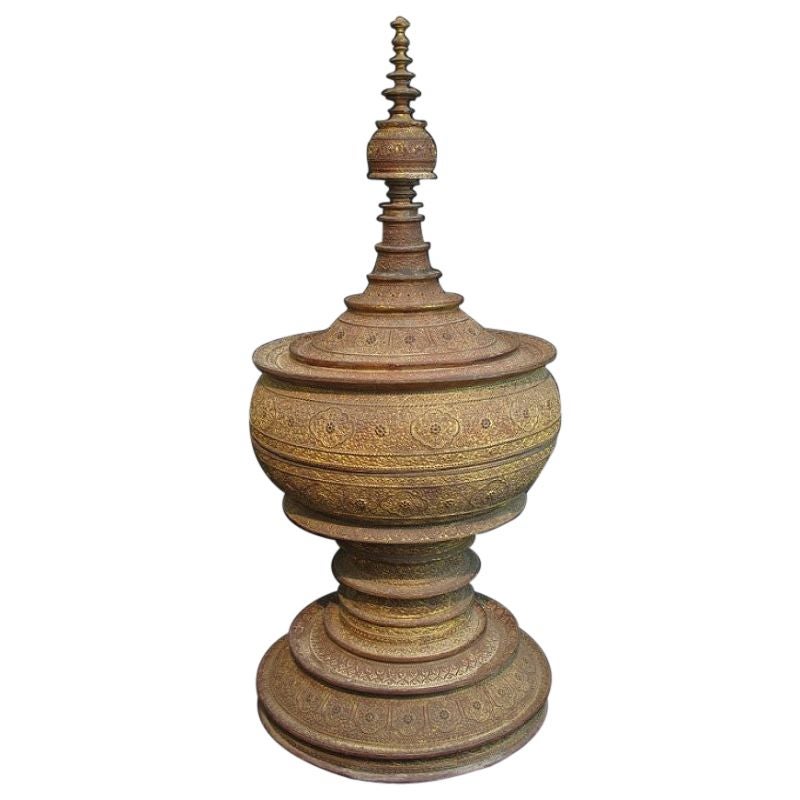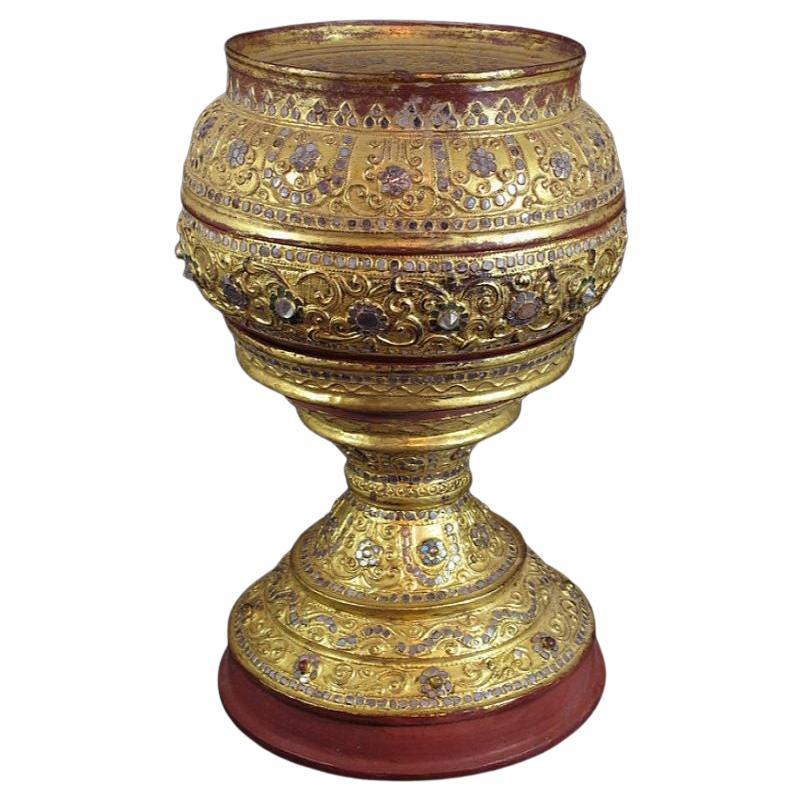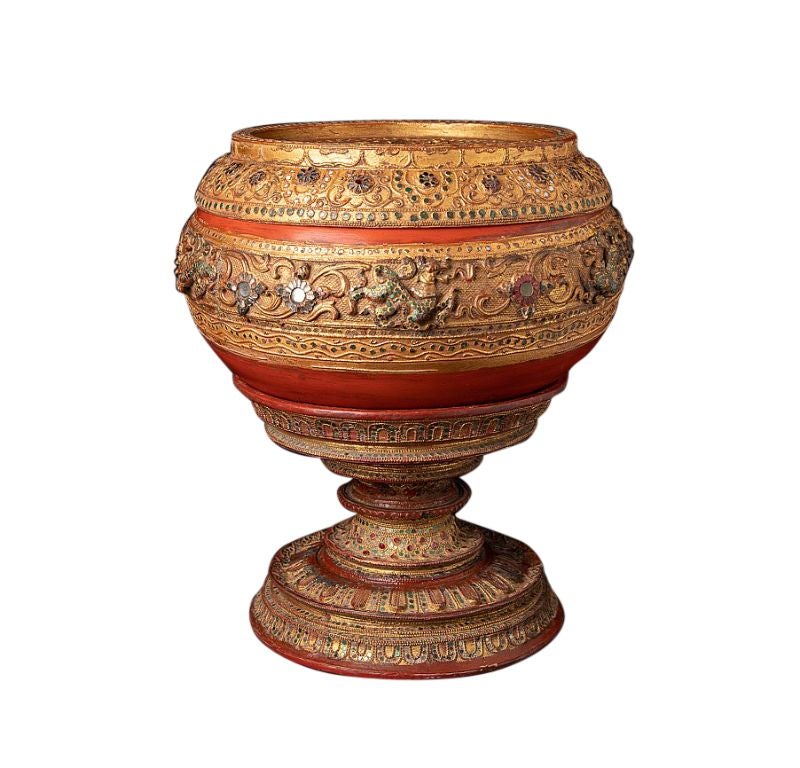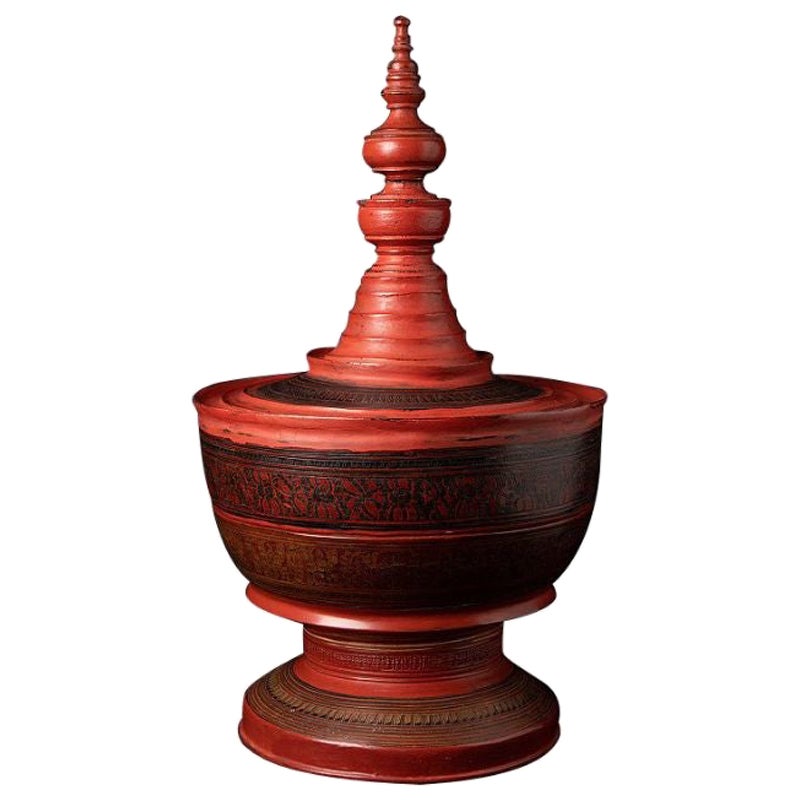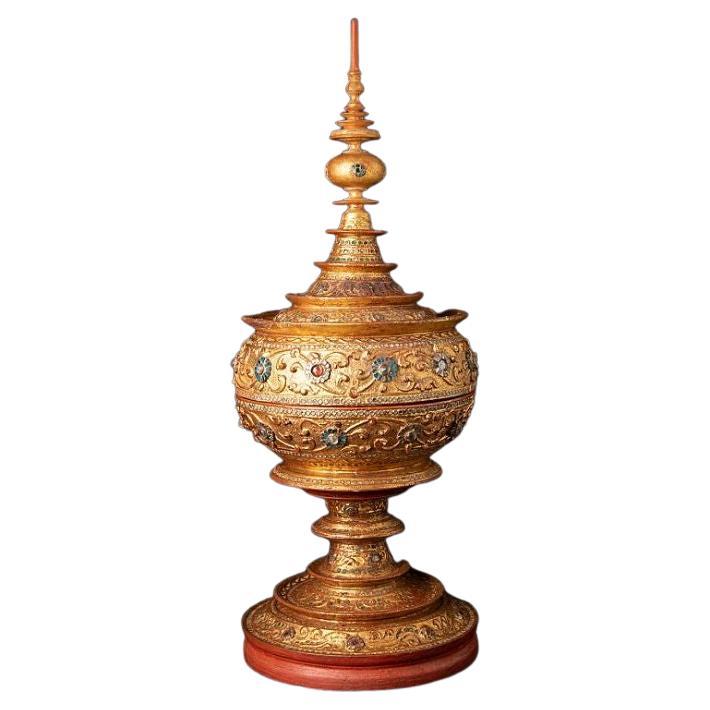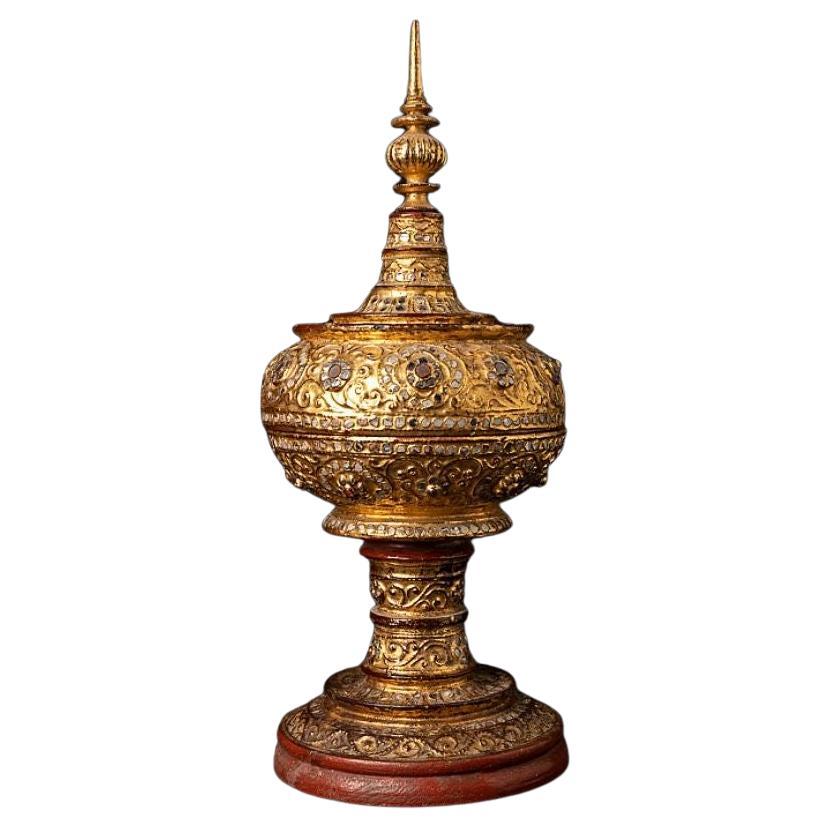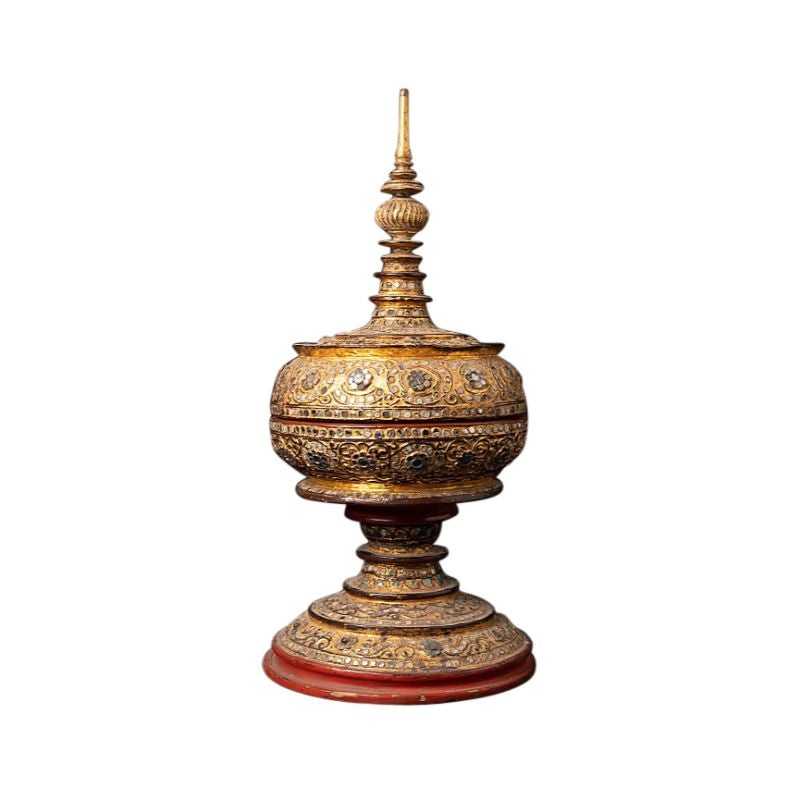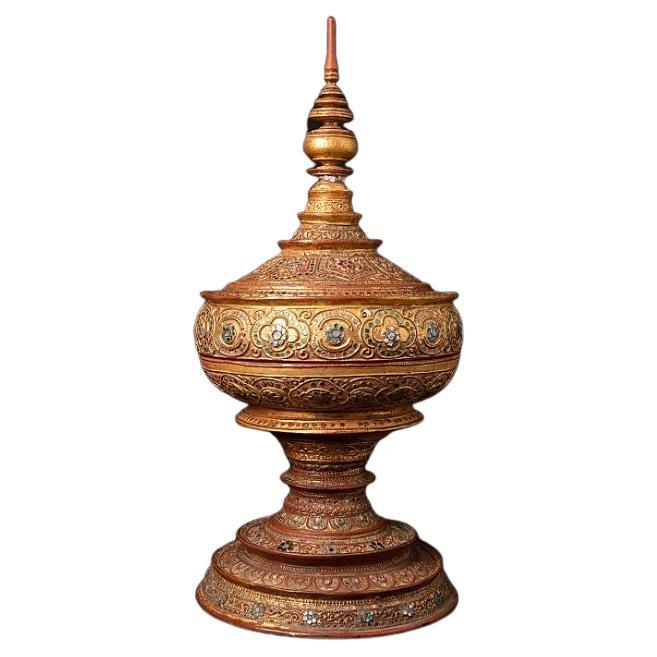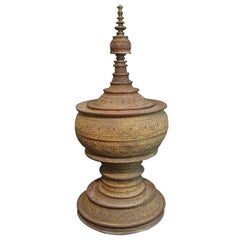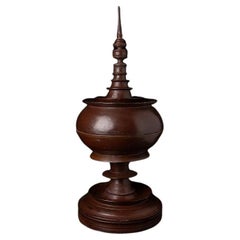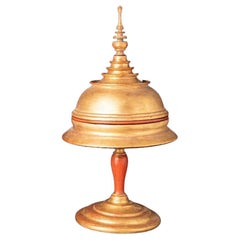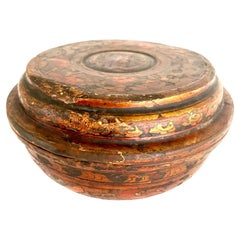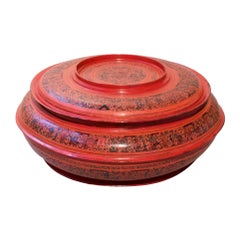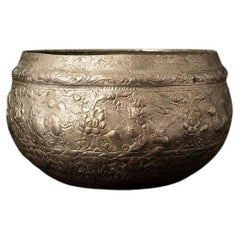
Antique Silver Plated Offering Bowl from Burma
View Similar Items
Video Loading
Want more images or videos?
Request additional images or videos from the seller
1 of 17
Antique Silver Plated Offering Bowl from Burma
About the Item
- Dimensions:Height: 5.12 in (13 cm)Width: 9.26 in (23.5 cm)Depth: 9.26 in (23.5 cm)
- Materials and Techniques:
- Place of Origin:
- Period:
- Date of Manufacture:Early 20th Century
- Condition:Wear consistent with age and use.
- Seller Location:DEVENTER, NL
- Reference Number:Seller: 3039-21stDibs: LU7845232140802
About the Seller
5.0
Gold Seller
These expertly vetted sellers are highly rated and consistently exceed customer expectations.
Established in 1997
1stDibs seller since 2022
20 sales on 1stDibs
Typical response time: 9 hours
More From This SellerView All
- Antique Burmese Offering Vessel from BurmaLocated in DEVENTER, NLMaterial: lacquerware. Measures: 111 cm high. 50 cm diameter. Made of lacquered bamboo. Originating from Burma. 19th Century. Goldplated with 24 krt. gold. 5 Parts.Category
Antique 19th Century Burmese Sculptures and Carvings
MaterialsLacquer
- Antique Burmese Offering Vessel from BurmaLocated in DEVENTER, NLMaterial: wood 76 cm high 31 cm diameter Weight: 4 kgs Shan (Tai Yai) style Originating from Burma Late 19th / early 20th century.Category
Antique Late 19th Century Burmese Sculptures and Carvings
MaterialsWood
- Antique Burmese Offering Vessel from BurmaLocated in DEVENTER, NLMaterial: wood 55,5 cm high 29,7 cm diameter Weight: 2.9 kgs Gilded with 24 krt. gold Originating from Burma Late 19th century.Category
Antique Late 19th Century Burmese Sculptures and Carvings
MaterialsWood
- Antique Burmese offering vessel from BurmaLocated in DEVENTER, NLMaterial: lacquerware 56,4 cm high 31,3 cm diameter Weight: 1.75 kgs Shan (Tai Yai) style Originating from Burma 19th centuryCategory
Antique 19th Century Burmese Sculptures and Carvings
MaterialsLacquer
- Antique Burmese Offering Vessel from BurmaLocated in DEVENTER, NLMaterial: lacquerware 41,2 cm high 37 cm diameter Weight: 3.25 kgs Gilded with 24 krt. gold Mandalay style Originating from Burma 19th century.Category
Antique 19th Century Burmese Sculptures and Carvings
MaterialsLacquer
- Antique Burmese Offering Vessel from BurmaLocated in DEVENTER, NLMaterial: lacquerware Measures: 42 cm high 27 cm diameter Weight: 2.1 kgs 3 parts Mandalay style Originating from Burma 19th century Cover is made of lacquered bamboo Base is made from wood Offering vessel...Category
Antique 19th Century Burmese Sculptures and Carvings
MaterialsLacquer
You May Also Like
- 19th Century, Gilded Lacquer Tsampa Bowl from TibetLocated in Atlanta, GAA beautiful late 19th century lacquer covered bowl that was once used for storing the famous Tibetan barley flour (Tsampa). This beautifully handcrafted wooden bowl has a gorgeous, l...Category
Antique Late 19th Century Tibetan Sculptures and Carvings
MaterialsWood, Lacquer, Paint
- Large Incised Lacquer Hsun-ok Offering Box With Interior Tray, Bagan, 20th C.Located in Point Richmond, CAExceptional Large Incised Lacquer Hsun-ok Offering Box With Interior Tray, Bagan, 20th Century. The large round bowl form is for holding cooked rice and the interior tray is for ho...Category
20th Century Burmese Folk Art Sculptures and Carvings
MaterialsWood, Lacquer
- 400-600 Year Old Burmese Sandstone Stupa Pagoda SculptureLocated in Kastrup, DKRare stupa sculpture, 400-600 years old, carved in sandstone. In original untouched, well-preserved condition. From Arakan in Burma. Typical stupa construction with square base, hemispherical dome and conical spire. At the base a portal door...Category
Antique 16th Century Burmese Other Sculptures and Carvings
MaterialsSandstone
- Antique Silver Document Case from BurmaLocated in London, GBAntique silver document case from Burma Burmese, late 19th century Measures: Length 48cm, diameter 6cm This wonderful object is a Burmese marriage d...Category
Antique Late 19th Century Burmese Sterling Silver
MaterialsSilver
- Antique Burmese Red Carved Wood Offering Basket from the 19th CenturyLocated in Yonkers, NYA 19th century Burmese offering basket made of carved wood painted red. This round basket displays a three-legged base with detailed carvings on the edge. The lid adopts a Burmese te...Category
Antique 19th Century Burmese Decorative Baskets
MaterialsWood
- Large Burmese Bronze Medicine Buddha, Pagan Style, Late 19th CenturyLocated in Austin, TXA large and magnificent cast bronze image of the Medicine Buddha, Bhaisajyaguru, rendered in the Burmese Pagan style, and most likely based on a period example that was either damaged or lost, 19th century, Burma or Thailand. He can be identified as the Medicine Buddha by the hand that rests in his lap, with his middle finger touching the thumb. A medicine pot or fruit stem would originally have been placed in his upturned palm. The face of this Buddha has been sculpted masterfully. He has a beautiful heart shaped face topped by hair neatly arranged in the typical "snail shell curls", and surmounted by a high ushnisha. Long, pendulous earlobes frame his face, a symbol of his princely past. He gazes serenely outwards from heavily lidded, downcast eyes, a content smile upon his full, lush lips. The Buddha is portrayed seated in vajrasana (full lotus position), his elegant hands displayed in varada mudra, the gesture of granting favors and fulfilling wishes. Long, exquisite fingers extended, the thumb and middle finger touching in a gesture of compassion. He is clothed in a simple kasaya wrapped around his body and over one shoulder, leaving the shoulder and part of his chest bare. The diaphanous garment clings to his body, outlining his well proportioned and graceful, almost sensuous, form. The excess material pooled in neat pleats in front of him. A sash thrown over his shoulder. He sits upon a double lotus base upon a raised platform. The platform features two kneeling attendants, usually interpreted as the monks Ananda and Kasyapa. Between them is a circular disc representing the Wheel of Dharma. Contained in the disk is a flower with eight petals, symbolizing the eightfold path, one of the principle teachings of the Buddha. The sides and back of the platform featuring a series of singha, or lions, representative of the Buddha's royal past. An applied lacquer patina covers the entirety of the image. Large deposits of ash (from incense) are present between the curls of the hair, as well as some the other crevices, indicating this image was the subject of worship for many years. Bhaisajyaguru, also called the Medicine Buddha, or Buddha of Healing, is a revered figure in the Buddhist pantheon as a master able to cure suffering, both physical and spiritual, through his teachings. The Pagan Empire ruled most of present day Burma (Myanmar) from 849 to 1297. The capital, Bagan, served as a both the center of government and religion, where Buddhism reigned supreme. Bagan was also at a crossroads of the Buddhist world, with influence from India, Nepal, Tibet, China, and even Indonesia shaping their culture. As such, Pagan Buddha...Category
Antique Late 19th Century Burmese Sculptures and Carvings
MaterialsBronze
Recently Viewed
View AllMore Ways To Browse
Antique Wood Plate
Offering Plates
Antique Silver Sculpture
Antique Metal Bowl
Burma Silver
Offering Bowl
Metal Sculpture Bowl
Antique Burmese Silver
Burmese Antique Silver
Burmese Offering
Burmese Silver Bowl
Myanmar Silver Bowl
Antique Burmese Silver Bowl
Burmese Offering Bowl
Burmese Wood Bowl
Japanese Stone Lantern
Stone Lanterns Japan
Lantern Stone Garden
